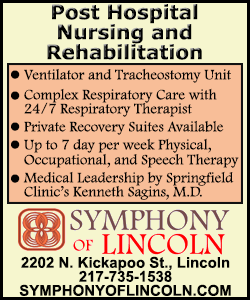|
 The move underscores Nestle's determination to move
beyond relatively stagnant traditional food markets into "wellness",
where growth prospects and profit margins are more enticing. The move underscores Nestle's determination to move
beyond relatively stagnant traditional food markets into "wellness",
where growth prospects and profit margins are more enticing.
"It is a major, major platform of growth for the future," Chief
Executive Officer Paul Bulcke told analysts on Thursday following
the release of the group's 2013 financial results. "It's the core of
our strategy."
Nestle said this week it would sell an 8 percent stake in L'Oreal
back to the French cosmetics company for cash and L'Oreal's half of
Galderma, whose portfolio ranges from prescription drugs and
injectable wrinkle treatments to over-the-counter products for skin,
hair and nails.
The move, which extends Nestle's health interests and brings it into
competition with some drug companies, is a long-term bet by Bulcke
that he can take the group in a new and more profitable direction.
Like other global consumer goods companies, Nestle's growth slowed
in 2013 as emerging market demand cooled and mature market consumers
remain cost-conscious. It expects growth for 2014 to be below its
long-term target as well.

In that landscape, Galderma could end up becoming a springboard for
more acquisitions in the health field, though the cash could also
fund deals in other areas.
"Clearly this area of skincare, and the medical area generally,
could be another avenue that they look to do more bolt-on deals in,
but don't forget the vast majority of their business is still core
food and beverage," said Kevin Dryer, associate portfolio manager at
Gabelli Funds, which owns Nestle shares.
He said General Mills could make sense for Nestle, given the two
already have a joint venture selling cereal and the U.S. company has
a growing portfolio of healthier foods such as Yoplait yogurt,
organic tomato sauce and frozen vegetables.
Another target could be Danone's "medical nutrition" business, which
sells liquid food for hospital patients unable to eat solids and
food supplements for elderly people. The French company is
considering a sale of that business, which could fetch more than 3
billion euros, though Nestle already controls 25 percent of the
market, and so may not be able to buy Danone's entire business,
sources told Reuters on Wednesday.
So-called medical foods, including those that may carry claims for
improving cognitive function, don't face as stringent tests as
medicines but still have much higher barriers to entry than normal
food.
Nestle believes demand for such products will rise as aging
populations require more special diets to deal with a range of
ailments.
"M&A is part of our equations," Nestle's Bulcke said on Thursday,
adding that the group was always looking at attractive bolt-on
opportunities.
YOU ARE WHAT YOU EAT
So far, the focus of Nestle's health push has been on nutrition but
the Galderma investment expands its interest into a broader
healthcare field. However, analysts believe larger acquisitions will
be needed.
"It's clear that they are going directionally into the health space
but ... for them to get into this space a bit more meaningfully they
probably need to do larger acquisitions, as they did when they were
consolidating in baby food," said Navid Malik, analyst at Cenkos
Securities.
[to top of second column] |

Nestle bought Pfizer's baby food division for $11.9 billion in
2012 and the Gerber baby foods business from Novartis in 2007 for
$5.5 billion.
"Healthcare obviously presents a premium price opportunity compared
to normal foods, chocolate and bottled water, all of which are
highly price competitive," Malik said.
Nestle could get into areas like omega-3 heart health, he
suggested, where it would compete with a products like
GlaxoSmithKline's drug Lovaza and Reckitt Benckiser's MegaRed krill
oil supplement.
On the dermatology front, Nestle's latest bet may be a long-term
threat to Botox-maker Allergan — and the Galderma deal also seems to
torpedo rumours of a possible tie-up between Nestle or Galderma and
the U.S. firm.
"This business did not have a lot of support from the parent company
and now they'll be able to resource and invest appropriately," said
Ronny Gal, analyst for Sanford Bernstein.
"Galderma's existing products are probably not a threat (to
Allergan), but longer-term they will be competing to be the first to
get competing products to market. Strategically, it is a threat to
Allergan to have a competitor that is more focused and better
resourced."
Nestle is not the only consumer company trying to diversify into
"wellness" products. Rivals such as PepsiCo, Unilever and Campbell
Soup are also adjusting their product portfolios to provide a
healthier line-up but Bulcke believes his firm is pushing the
boundaries further than rivals.
"It is about looking around the corner and seeing value coming," he
said. "We see skin health coming up as one of the biggest growth
drivers in that area."
Part of that reflects a recognition that Big Food is in the
firing-line as a global obesity epidemic runs out of control — spurring calls for more regulation — but there is also a good
business case for moving up the value chain.

Nestle sees itself increasingly as a science-driven company ready to
catch the next wave in health trends — whether that is a novel food
or skin product.
"There is a lot of evidence linking what you eat to how you look and
potentially something might be commercialized and industrialized in
the future — and that is what Nestle is keeping an eye on," said
Kepler Cheuvreux analyst Jon Cox.
(Additional reporting by Silke
Koltrowitz in Zurich and Ransdell Pierson in New York; editing by
Giles Elgood)
[© 2014 Thomson Reuters. All rights
reserved.] Copyright 2014 Reuters. All rights reserved. This material may not be published,
broadcast, rewritten or redistributed. |